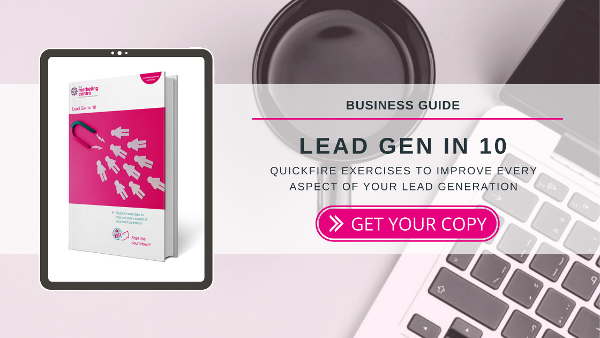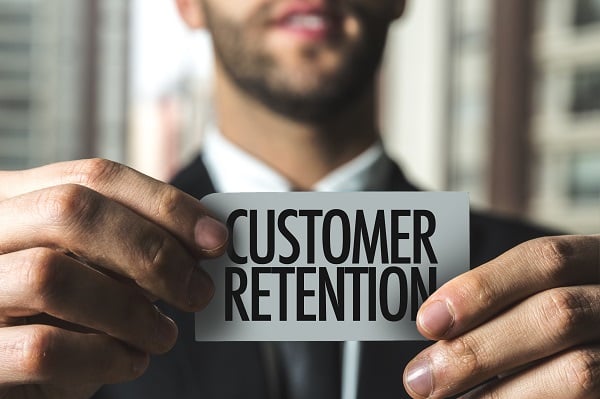LinkedIn outreach is now the second most popular lead generation tactic for UK SMBs. As we’ve said before, if you’re not personally using LinkedIn, you’re missing out.
But a lot of business owners aren’t sure where to start with LinkedIn and often struggle with creating good marketing content. To the uninitiated, it can feel noisy and overwhelming - or simply a waste of time.
To help you get to grips with LinkedIn, we recently asked three of our part-time Marketing Directors to share how they currently use it and what they’ve learned so far. There’s no right or wrong way to use LinkedIn, the key thing is to find an approach that works for you.
Ged Leigh on where to start
Ged has been using LinkedIn since 2008. It was when Sales Navigator launched in 2014 that he started using it to generate leads.
At first, he tried to make as many connections as possible. However, he soon realised that amassing connections and publishing content hoping they would read it was not strategic enough. It was the two-way dialogue with new connections that really mattered.
“I put myself through every online course, training session, seminar I could find for about 18 months”, he says. “It really crystallised my understanding of how best to try and manage, develop and grow that two-way engagement”.
These days Ged has a clear strategy, with goals and a repeatable process for finding leads and building relationships. This helps him ensure that time spent on the platform always has a clear ROI.
He recommends a five step process for business owners that want to get started on LinkedIn:
- Build a professional and impressive personal profile with the right keywords, quality photography and every section filled out
- Send personalised connection requests to people who meet your ideal customer profile
- When someone accepts, drop them a friendly, conversational message to start the relationship right
- Regularly publish your own content so that you stay front-of-mind for your contacts
- Take time each day to comment on what your connections have shared
“It’s possible to spend £2,000 with a PR agency and have no real idea of how it went,” Ged says. But with LinkedIn, you can measure the engagement, the response you get from people. “The impact is immediate.”
Christine Durkin on approaching prospects
Some adopt the strategy of accepting every connection request they receive. Christine is not convinced that this is the right approach. Instead, she vets every connection request she receives to establish who they are and what they do.
“If it’s someone who is clearly just doing business development and is junior, I generally don’t connect with them unless they are local and I know of them”, she says. “The same goes for agencies who are overseas - we’ve never worked with an overseas agency, so I don’t see value there either."
“Your network is your net worth”, she adds. Carefully managing who is in your connections makes your LinkedIn network much more valuable. “It can’t just be a numbers game. If you’re going to use LinkedIn as a communication tool - as a one-to-one, peer-to-peer network - you can’t just send the same message to 30,000 people.”
Christine reaches out to new connections the day after the connection is sent. The first step is to send a non-salesy message introducing herself and explaining that she is local. She’ll often offer to meet up for a informal coffee to hear more about what they’re working on.
“It’s pitched at helping them, rather than selling to them”, she says. If they respond, it’s a potential lead. If they don’t respond, she’ll drop them a second message with a link to a useful or interesting piece of content, or an upcoming webinar."
“The key thing is, don’t be too salesy”, she says. “Just be yourself, and try and offer them something that will help them.” The best way to start conversations is to employ the law of reciprocity. By doing something to help them with no expectation of a return, they will be more likely to start a conversation."
Tim Parrack on creating content and using tools
Tim Parrack uses the interactions he receives on his posts to open conversations with prospects.
“I recently posted something that a client responded to”, he says. “I hadn’t really spoken to him a great deal this year, but it made me realise that I’m still on his radar. I figured there was something in his mind that wanted me to know that connection was still there, so I gave him a call.”
Regularly posting content that sparks debate, or interacting with content that others have posted helps Tim to meet and chat to people that may become leads. “It’s almost like a referral or recommendation - albeit at a very low level - where people will feel warm if you then end up making contact with them in one way or another”.
Tim also stresses the value of certain automation tools, in addition to content, to recognise potential targets.
“Sales Navigator allows me to mail people and find out about people at a second or third-degree level. That’s useful because I can then connect with them.”
Any engagement with that contact can be the start of an ongoing relationship. If a contact is unable to make a webinar he has invited them to, he suggests they still register to access the recording. “Down the line, I can then get back in touch to ask if they watched it, and to invite them to further webinars.”
“If I’m going to sell to people, I have to get them to like me first”, Tim says. “Writing about things that make people feel warm and relaxed about you is the equivalent of going into the coffee room in your first meeting with someone and talking about children, the weather, football and so on.”
He believes that posting about his interests - such as his volunteering work as a steward - ensures that he is seen as human. While he won’t share anything political or controversial, but always asks himself three questions before he posts:
- Could this be of interest to people?
- Is it relevant?
- Is it going to improve how people view me?
The right approach for you
As Ged, Christine and Tim have proven, there’s no “one size fits all” approach when it comes to social selling. Some use automation tools to build their network, and others prefer to do things manually. Some let their personalities and life outside work well and truly shine through, and others are more focused on work.
You need to find the right balance and approach for you. The only thing we wouldn’t recommend is not getting involved. LinkedIn consistently delivers results for our team and our customers. It’s far too powerful to ignore.





